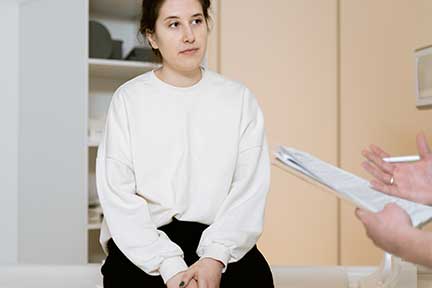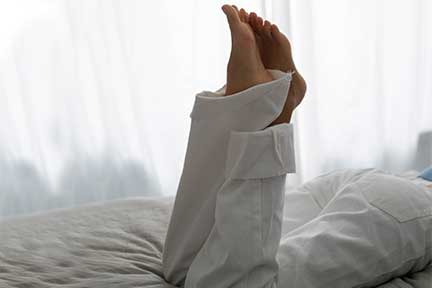Explanation of Restless Legs Syndrome

Restless Legs Syndrome: an irresistible urge to move legs, usually as it gets closer to bedtime or with periods of inactivity.
Restless legs syndrome is different from kicking at night, periodic limb movements, and nocturnal leg cramps.
Top 10 things to do if you have Restless Legs Syndrome.

Although restless legs syndrome has probably always been around, it is becoming a more popular illness because there are new expensive treatments for it. With the drug companies marketing their medications for restless legs, people are starting to hear more about it and then making the connection that they might have it. This is why the diagnosis of restless legs is gaining prevalence. The older drugs that have traditionally been used to treat restless legs tend to have many side effects. The new medication formulations are much better and the benefits clearly outweigh the risks now.
Restless legs syndrome may not be a deadly illness, but it can certainly be very tiresome! People often describe it as a drawing, tightness, or creepy-crawly sensation in the lower legs that is relieved temporarily by moving the leg. It is usually noticed around bedtime and can cause some trouble falling asleep. This would be considered mild disease. As symptoms get worse, the restless legs may begin in the nighttime hours. The sensation may spread to the foot and thighs/hamstrings. People may have to get up and walk around a bit before going back to bed to relieve the legs of the sensation. In more severe disease, the restlessness may start as early as the afternoon or evening and prevent sleep for about 2 hours. I have one patient with very severe restless legs that begin in the early afternoon, when she has to begin taking medications.
No one really knows why someone gets this problem. There is likely some genetics involved, since it tends to run in families. The disorder is primarily in the central nervous system (brain and spinal cord), affecting the dopamine type neurotransmitter. This is where the drugs can act to control the problem. Parkinsons Disease is also a problem with the dopamine neurotransmitter, so the same medications used to treat Parkinsons are also used to treat restless legs. These drugs help while you take them. They are not cures and do not control disease progression.
Not everyone who has restless legs need medication though. In fact, most people can manage without medications. One of the most common and treatable causes of restless legs is iron deficiency. Checking iron levels is usually the first place to start. Perhaps related to the iron deficiency, women tend to have worse symptoms around the time of menses and when pregnant.
Top 10 things to do for Restless Legs!

- See your doctor. The doctor should be able to rule out serious brain or spinal cord problems with a physical examination. A central nervous system (brain and spinal cord) problem can cause restless legs. Your doctor can also check your circulation to make sure that the artery and vein circulation is adequate.
- Get some blood tests. You need to check for iron and storage iron levels, thyroid function, kidney function, and diabetes. Low iron and storage iron levels, poor kidney function, abnormal thyroid function, and diabetes can all cause restless legs. If that does not determine a clear cause, then a second round of blood tests should include magnesium, vitamin B12, folate, syphilis tests (RPR/VDRL), blood counts, and further diabetes testing.
- If you could be pregnant, check! Pregnancy can cause restless legs too. It's usually better soon after delivery. No medications should be used to treat restless legs during pregnancy. But iron supplements can be taken and often help, even if the iron levels aren't too low.
- Decrease caffeine use. Caffeine can make symptoms worse. This includes coffee, energy drinks, tea, soft drinks, and chocolate.
- Check with your doctor if you are taking medications for a mental condition, such as depression, psychosis, schizophrenia, or bipolar. Some of the medications used for those conditions may make restless legs worse.
- If you take medications to help with nausea such as Reglan or metaclopromide, also ask your doctor about that and the restless legs.
- Check with your doctor about taking a daily multivitamin that contains folic acid (folate), Vitamin B12, magnesium, and iron.
- Try decreasing alcohol use, which can make some people with restless legs have worse symptoms.
- Try decreasing nicotine use — stop smoking, which can make some people with restless legs have worse symptoms.
- Use hot or cold compresses to massage the legs when the symptoms are severe.
Listening to your choice of music with SleepPhones® headphones may help you drift off to sleep by distracting from discomfort. Find out how SleepPhones® headphones are the most comfortable headphones you can wear in bed!
Copyright © Wei-Shin Lai, MD 2007
